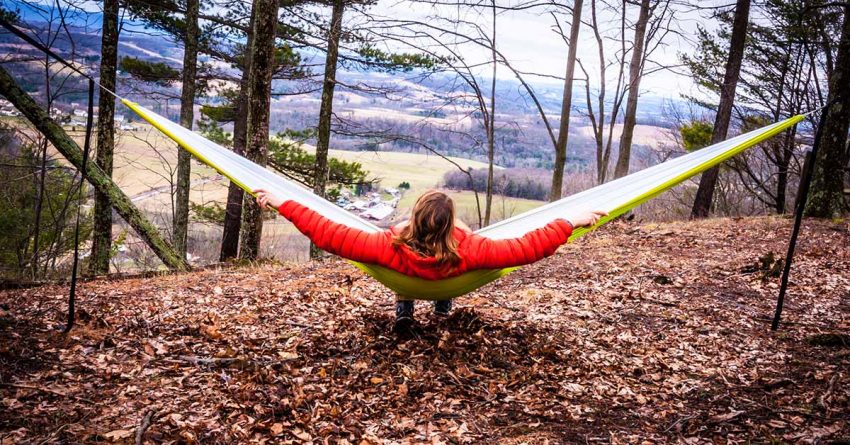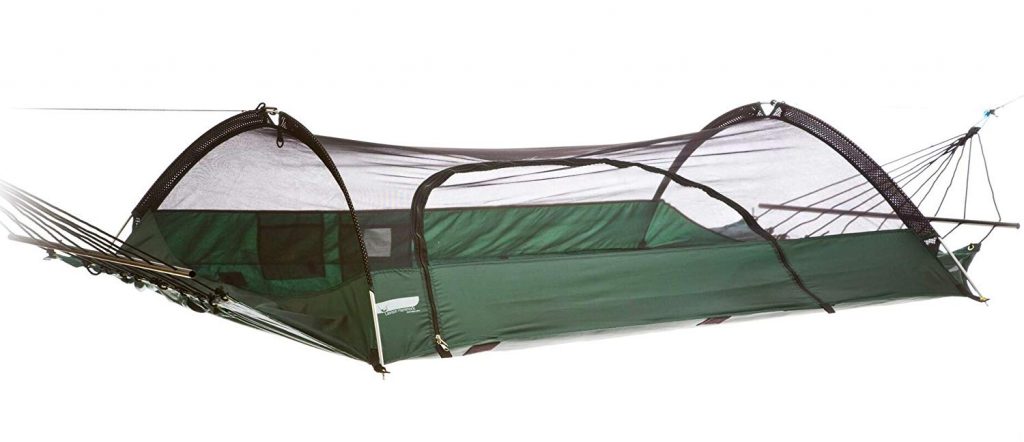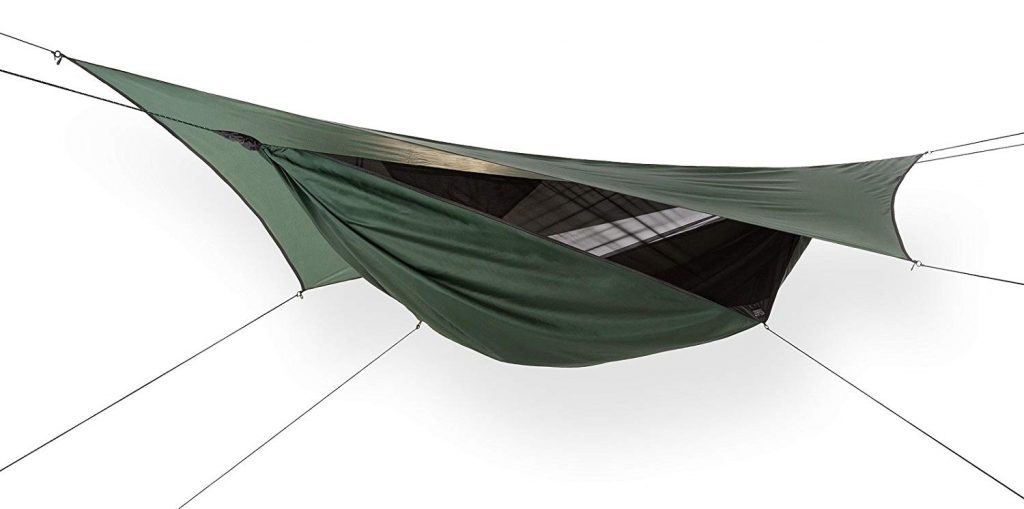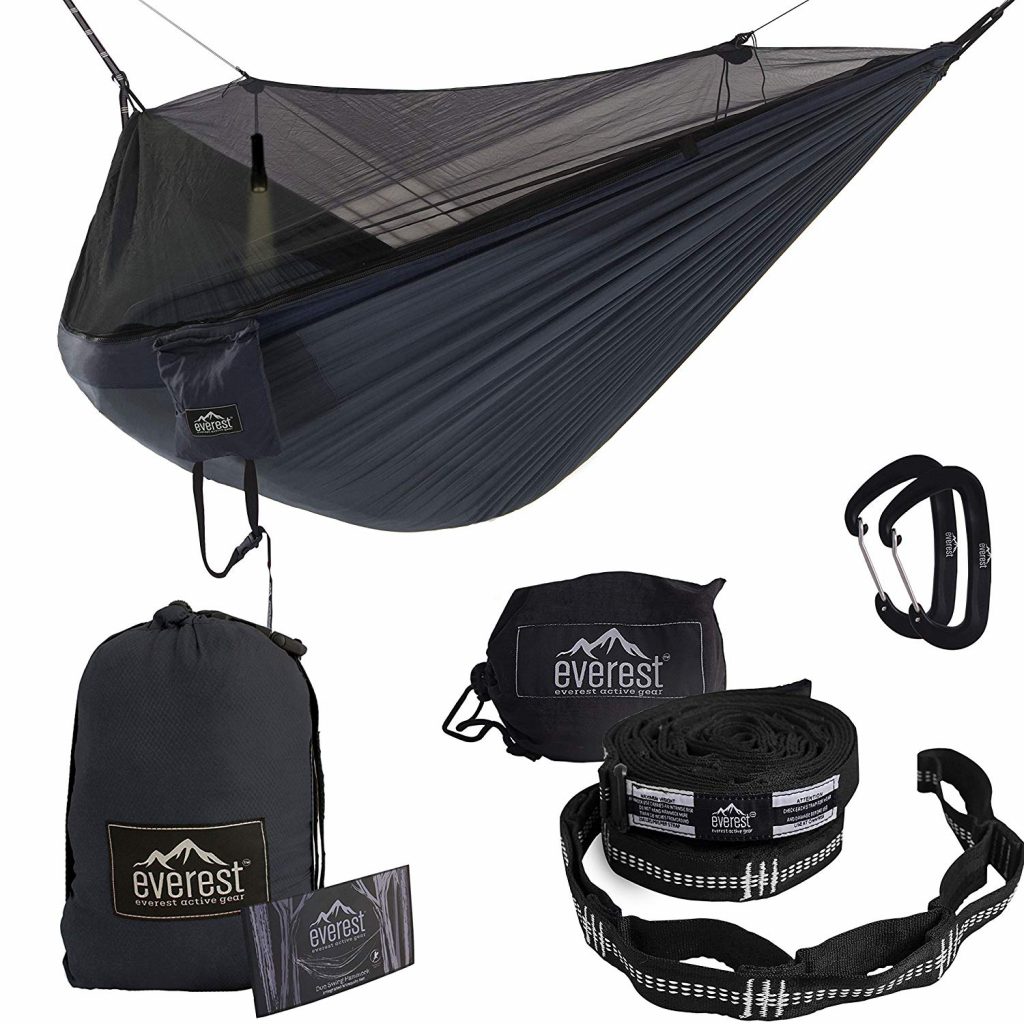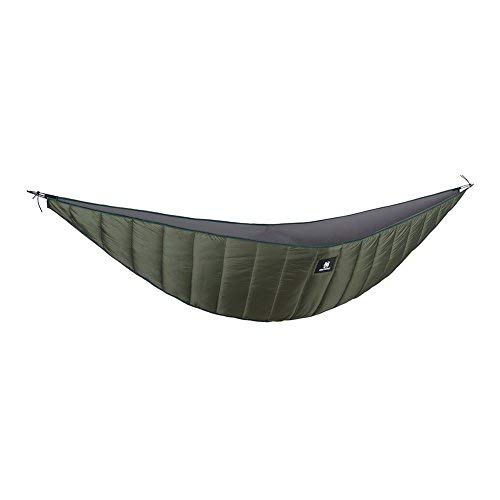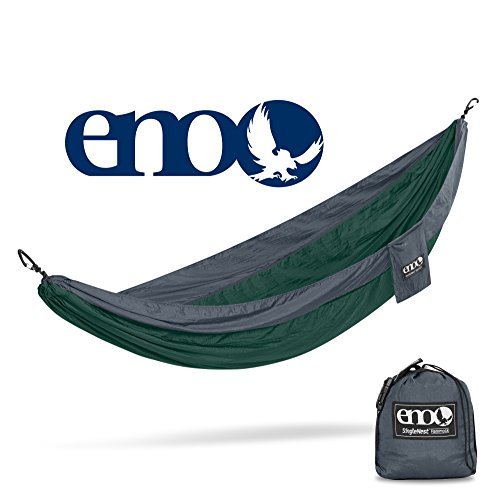A Camping Hammock may just be the missing ingredient for your ultimate camping experience. Take a moment and remember why you love camping. For many it is being outdoors, relaxing under the stars or simply finding peace in nature. A camping hammock is the perfect vessel to love camping all over again.
Hanging in the balance

These days camping hammocks are lightweight and comfortable. They are typically made of the same high quality nylon used in parachutes. This nylon results in comfort and sturdiness. Camping hammocks are also relatively easy to manage and maintain. They are typically easy to setup up as most camping hammocks come with straps, ties and/or clips to make setup a breeze. Camping hammocks are also easy to carry as they can weigh less than a pound. Being light weight makes a camping hammock a great choice when you’re hiking. Once you have your camping hammock set up you’ll find a comfortable and uncontested outdoor experience under the stars.
Of course, there are many flavors of camping hammocks. There are hammocks made for two for double the fun. There are camping hammocks with mosquito nets. Some come with accessories including bags and rain fly covers. Certainly, some self-evaluation and preparation can be leveraged to help decide which hammock will best fit your needs.
A crash course in camping hammock terminology
As we jump into camping hammocks it would be good to quickly define a few terms.
- Sit Height: The sit height is the distance between the bottom of the camping hammock and the ground. This is measured when bearing the full weight of the occupant(s).
- Hang Angle: When the camping hammock is hanging with at full weight the hang angle is the angle in degrees the suspension cord is at the support.
- Hang Point: The spot on the support where the suspension cord is fastened to support the camping hammock.
- Suspension length: The distance of the exposed suspension cord from the support to the camping hammock.
- Ridgeline: The distance of hammock that is connected between the suspension cords.
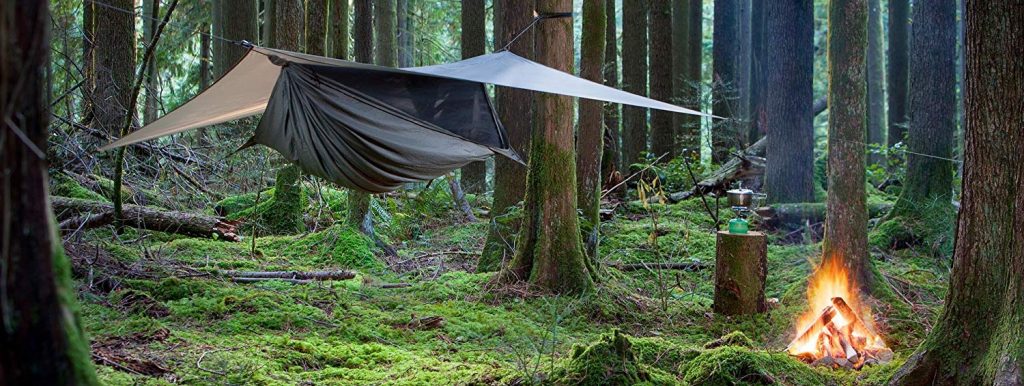
Tips for handling your camping hammock
- Hang your camping hammock using sturdy supports approximately 20 feet apart. A good choice would be a couple of live trees that each, individually could support double the weight.
- You are going to want to put your hang point up high enough on the supports to provide an appropriate about of Sit Height. A decent sit height to aim for is about 18 inches. This gap will provide required clearance from the ground but keep mounting and dismounting the hammock manageable.
- A decent Hang Angle to aim for is approximately 30 degrees. This is a little leeway here. The higher the hang angle the less reclined the camping hammock will be. A hang angle of fewer degrees will be more comfortable for longer durations. If you are thinking of a few minutes here and there a more reclined camping hammock may be more comfortable. The higher the hang angle the more reclined the hammock. One important consideration regarding hang angle is how high up the supports the hang point exists and resulting sit height. You may be limited in flexibility based on available support and desired sit height.
- Location, location, location. Take heed when you hang your camping hammock. Avoid pitfalls like hanging over a creak or low laying space that may see significant water in a flash flooding. A clear and elevated area sill serve you well.
- Keep the ridgeline straight. Hang your camping hammock such that the resulting ridgeline will be straight. This will ensure appropriately balanced force and pressure will be dispersed to the support structures. Note – to achieve a level ridgeline you may need one suspension line to be longer than the other.
- This calculator may help with setting up your hammock.
Stay safe in your camping hammock.
By choosing a safe, dry and elevated location for your hang points you are well on your way to safely enjoying your camping hammock. Beyond location it is imperative to use solid structures for support such as live trees. Also ensure a level ridgeline, hang angles and sit height to round off the safety points.
Camping hammock recommendations
When thinking about which camping hammock to recommend it is, again, important to understand your own needs and requirements. It is important to understand what type of camping hammock person you are. Recommended reading: Full Beginners Hammock Camping Guide
Hammock / tent combination
If you are looking to camp for several nights you’ll need to consider shelter. Our shelter and sleep recommendation is a hammock/tent combination. A trusted hammock/tent is the Lawson Hammock Blue Ridge Camping Hammock and Tent.
The Lawson Hammock Blue Ridge Camping Hammock
Pros
- Hybrid tent/hammock – can be used on the ground as a tent.
- Uses a spreader bar to reduce the cacoon/banana laying curvature and provide a flater surface.
- Attachable mosquito netting included
- Attachable Rain fly included
Cons
- More expensive model.
- Heavier model – at 4.25 pounds the weight may become problematic on trails.
- Users of this model have stated that this hammock is bit more tip proned and requires additional lines on the corners to keep it anchored down.
Durable hammock with mosquito net and rain fly
If you are looking for a durable high quality camping hammock with Mosquito mesh and rain fly included we recommend the Hennessy Hammock M10 Expedition.
The Hennessy Hammock M10 Expedition
Pros
- Built in mosquito (“no see um”) mesh netting
- Included matching rain fly
- Bottom or Side entry options
Cons
- Mosquito net is not removable so on a clear night with no mosquitos you will still have it
- A little less comfortable for taller campers
- The included rain flay is asymmetrical and doesn’t provide total coverage
Recommended choice for easy setup and mosquito netting
Mosquitos can suck the fun out of your hammock experience. Luckily these pests are manageable with mosquito nets. The Everest Double Camping Hammock is a quality camping hammock with a removable mosquito net.
Everest Double Camping Hammock with Mosquito Net
Pros
- Less expensive
- Easy setup
- Mosquito/no-see-um mesh netting included
Cons
- No internal storage pouches
- Not well suited for individuals over 6ft. tall
- The netting is oversized and tends to interfere with the occupants
Underquilt recommendation
When it comes to staying warm in your hammock you can always DIY your underquilt. But if DIYing isn’t in the cards you can purchase a quality underquilt. If you are camping in the cold and looking to extend the camping hammock season we recommend adding the OneTigris Hammock Underquilt to your hammock.
OneTigris Hammock Underquilt
Pros
- Less expensive
- Keeps campers warm even down into the 30s
- Durable and good quality
Cons
- Hammock required
- Heavier
- Only well suited for shorter hammocks.
Basic solo recommendation
For a basic, solo, no frills and no straps included hammock we recommend the ENO – Eagles Nest Outfitters SingleNest Hammock.
ENO – Eagles Nest Outfitters SingleNest Hammock
Pros
- Lightweight coming in at only 1 pound.
- Inexpensive
- Small storage for easy transport.
- Simple and straightforward
Cons
- No straps included to hang the hammock
- Only room for one
- No additional features like a mosquito net or rain fly.
Conclusion
Slinging yourself into a tree is a fantastic way to get into nature. Camping Hammocks are a great way to take a load off when camping or out on hiking excursions. Whether you are looking to camp for multiple days or just go for a day hike in the woods a camping hammock will give you a place to rest your head and enjoy the moment.
Do you have a camping hammock story, recommendation or warning? We’d love to hear it. Comment below or contact us.

